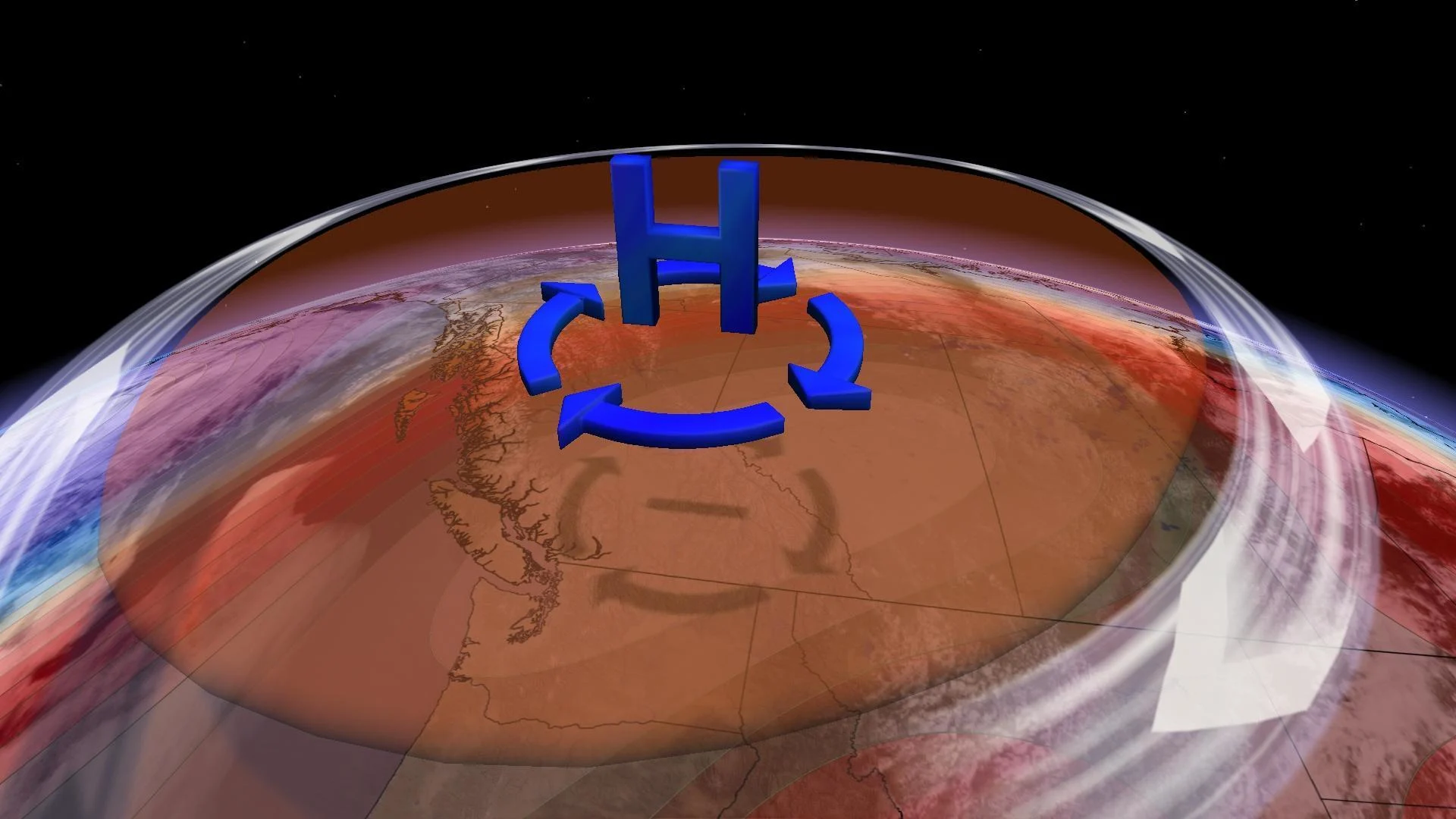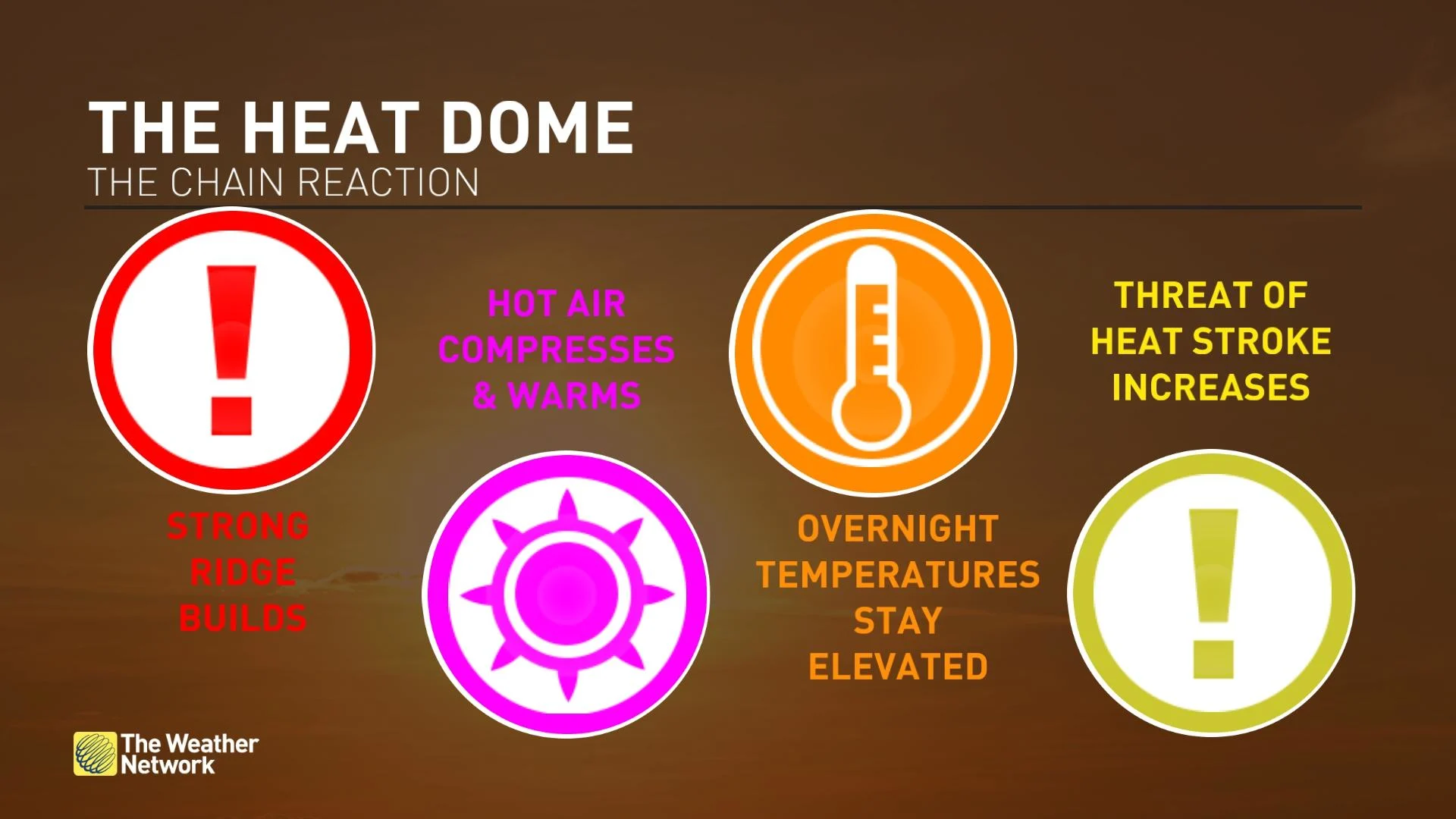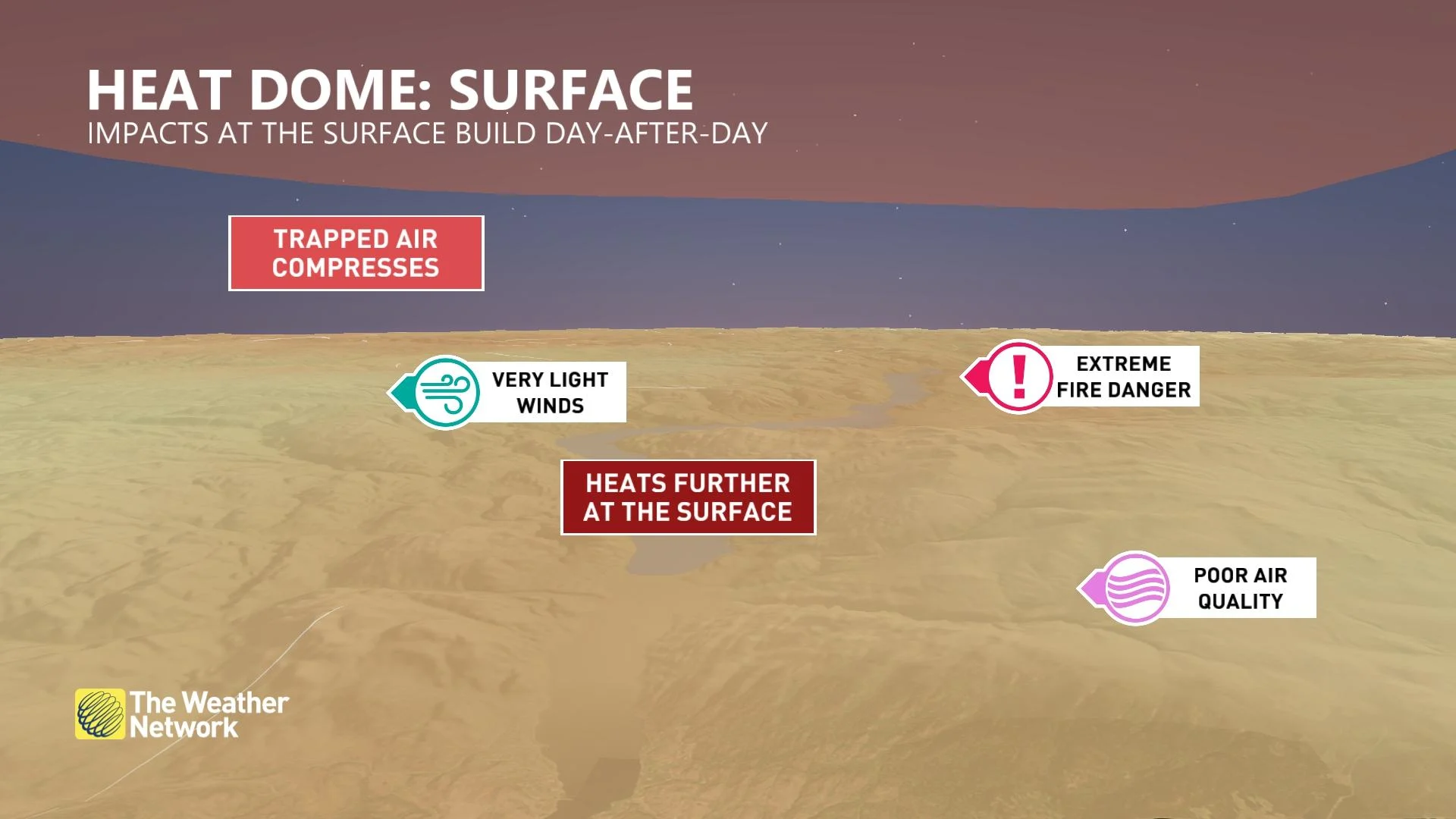
Talking about the warmth? Add heat dome to your vocabulary, here's why
Heat domes may soon become frequent topics of discussion at the dinner table as we head into the summer season. We break down exactly what they are and the ways they can cause problems once established
Similar to how atmospheric river became an established term in the minds of Canadians in 2021 after B.C.'s devastating flooding, heat dome may soon become a part of the regular conversation about the weather, if it hasn't already.
At the moment, a heat dome is impacting Eastern Canada. Southern Ontario, Quebec, and Atlantic Canada will see temperatures in the 30s and humidex values in the mid-to-low 40s through most of the week.
Visit The Weather Network's wildfire hub to keep up with the latest on the active wildfire season across Western Canada.
Although the ridge is not as strong as the deadly June 2021 heat dome in B.C., it is on the extreme end for mid-June, even pushing the envelope by its standards.
The mid-June heat in the East will likely not be the last time the heat dome phenomenon is mentioned in Canada this year.

So, what exactly is a heat dome? How dangerous can it be?
Well, it starts out several kilometres above the surface, with a high pressure situated in the upper atmosphere acting as a dome across the northern latitudes.
"That jet stream arcs well to the north, but that signature has a severe impact at the surface," says Tyler Hamilton, a meteorologist at The Weather Network.
The trapped air warms and compresses, further heating the surface. It particularly encloses it in the valley bottoms, Hamilton said. As a result, it creates an extreme fire danger and poor air quality -- "a recipe for disaster."
To meet the criteria for a heat dome, you look for a stalling high-pressure system that is cut off from the rest of the upper-level wind patterns surrounding it. With a heat dome stranded in place, the temperatures can warm day-after-day.

The aforementioned recipe is dependent on a strong ridge building daily and the warm air compressing, but the real threats are the overnight temperatures, he added.
"[They] remain largely elevated, and that sets up the next day to be even warmer, really increasing the threat of heat stroke," said Hamilton.
And, as seen in B.C.'s major heat dome in 2021, you really want to ensure you take care of yourself and your family as the hot temperatures can result in deaths.
The risks associated with any prolonged heat event includes health issues such as heat stroke and heat exhaustion.
People are advised to take the following precautions to protect themselves, their families and their neighbours:
Consider rescheduling outdoor activities to cooler hours of the day.
Take frequent breaks from the heat, spending time in cooled indoor spaces where possible.
Drink plenty of water and other non-alcoholic, non-caffeinated beverages to stay hydrated.
Check for your children or pets before you exit your vehicle. Do not leave any person or pet inside a closed vehicle, for any length of time.
WATCH: How living in a 'heat dome' can impact your body
Follow Nathan Howes on X, formerly known as Twitter.










